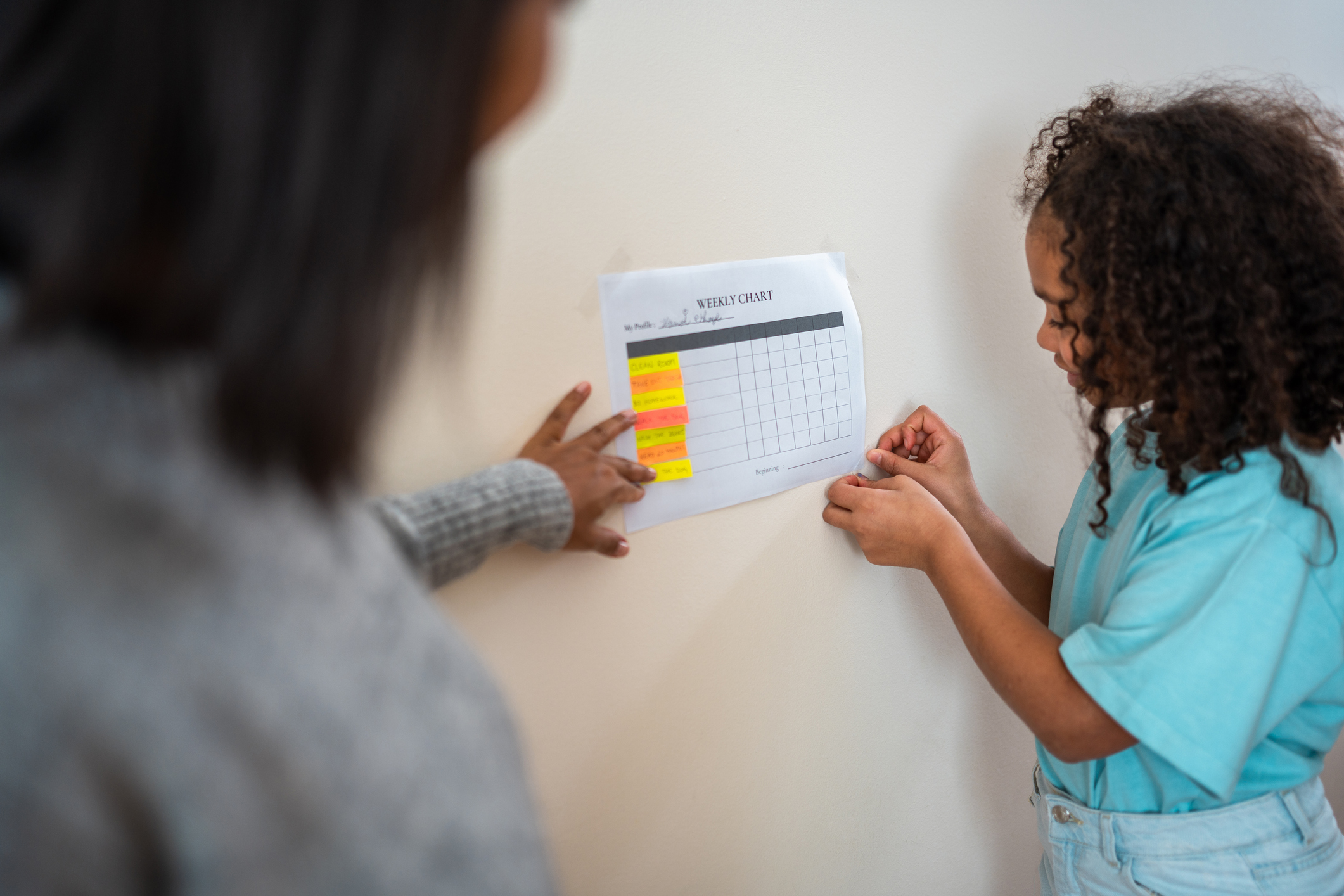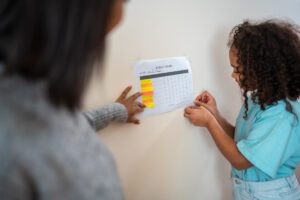
7 August 2025
Creating and Using Behavior Charts That Really Work
Behavior charts can be a powerful tool for caregivers to support positive behaviors and create clear, consistent expectations in the home. When used according to best practices, they foster cooperation, build trust, and reduce power struggles, especially in foster care settings where children may be navigating trauma. Charts can also help caregivers provide the structure and predictability that many children in care need to feel safe.

What Are Behavior Charts?
Behavior charts are visual tools that help track a child’s behavior and reinforce positive actions with specific, agreed-upon rewards. They typically list behaviors you want to encourage (like getting ready for school on time or using respectful language) alongside a system of tracking (stickers, points, stars, etc.) and rewards.
Charts can be tailored for any age. The key is that they offer a consistent, visual, and motivating way to reinforce desired behaviors.
Why Rewards Charts Work
According to family therapists and child development experts, behavior charts are effective because they clarify expectations and reward the behaviors you want to see. As these behaviors are reinforced, they’re more likely to be repeated. Research supports the use of positive reinforcement systems to improve behavior in children.
David Irwin, a family therapist with extensive experience working with foster families, explains:
“‘Reward the behavior you want to see’ is a phrase I regularly use in family therapy. Clarity on what behaviors are desired, and reasonable incentives, can be very helpful for both caregiver and youth.”
He also notes that while behavior charts require effort and consistency, the benefits often outweigh the challenges:
“Behavior charts might take a little work to set up and to actually follow through on rewards for specific behaviors, but they are so often helpful that it is worth the effort.”
In particular, Irwin emphasizes the need for individualized approaches:
“One size does NOT fit all, so working with your family therapist to set up such a chart can be useful, as different kids and situations may benefit from that third party support to gather agreement [on what to include on the rewards chart and how to set it up].”
In foster care settings, behavior charts can also help build shared language between the child and caregiver, and provide a concrete tool for encouraging healing, accountability, and positive reinforcement.
Best Practices for Setting Up a Behavior Chart

1. Focus on Two to Three Specific Behaviors at a Time: Too many goals can overwhelm both you and your child. Choose just a few behaviors you want to encourage—ones that are realistic, trauma-informed, and developmentally appropriate.
2. Involve the Child: Let your child help choose the goals and the rewards within reason. When they have input, they are more likely to buy into the process and feel respected.
3. Be Clear and Concrete: “Be respectful” is vague. “Use kind words with your sister” is specific and easier to measure.
4. Be Consistent: Follow through daily on tracking and rewarding behavior. If the system feels inconsistent, it loses power quickly.
5. Pair with Praise: Charts should not replace genuine, verbal praise. Celebrate progress out loud whenever possible. As one childhood education expert, Fayth Keldgord, explained to us, praise is even more important than the chart itself. “Aim for three positive praises for each behavior correction…basically the idea is that you should be using way more positive talk about the things they’re doing right than what they’re doing wrong. Also, make sure you’re explicitly teaching what behavior you want to see, and role play it with them.”
6. Seek Support: Especially in foster care, a therapist or caseworker can help mediate goal-setting and ensure expectations are aligned with the child’s history, needs, and developmental stage.
Sample Rewards by Age Group
While all children are different, here are some age-appropriate reward ideas.
Ages 3–7
- Extra bedtime story
- Choose a movie night
- Stickers or small toys
- 10 extra minutes of playtime
Ages 8–11
- Stay up 30 minutes later
- Choose what’s for dinner
- Small allowance
Ages 12–17
- Extra screen time
- Later weekend curfew
- Gift cards
- Privilege to go out with friends
Remember: the best rewards are the ones that are meaningful to your child.
Recommended Behavior Chart Apps for Caregivers
If you’re looking for digital tools to support behavior tracking, these apps can help:
- iRewardChart ($2.99) and iRewardChart Lite (FREE): These apps reinforce and reward positive behaviors with a customizable chart system. The paid version can track an unlimited number of behaviors and rewards for multiple children, while the Lite version is limited to one child and four behaviors.
- Behavior Counter ($0.99): A simple, bare-bones tally system ideal for caregivers who want a no-frills approach. It includes some basic statistical tools to help identify behavior patterns and possible triggers.
- BehaviorSnap ($4.99): Developed by school psychologists, BehaviorSnap is a multimodal behavior observation tool designed to track the frequency, duration, and function of target behaviors. It’s great for caregivers looking for more detailed behavior analysis.
These tools can be especially helpful in foster care settings where clear documentation and consistency are key.
Behavior charts aren’t magic, and they won’t work without consistency. But with effort and empathy, they can be a fantastic tool to bring more peace and collaboration into your home. If you’re unsure about where to start, talk to your child’s therapist or caseworker about setting up a simple system that fits your family and your child’s needs.
Looking for more guidance and support? See what trainings we have coming up.

